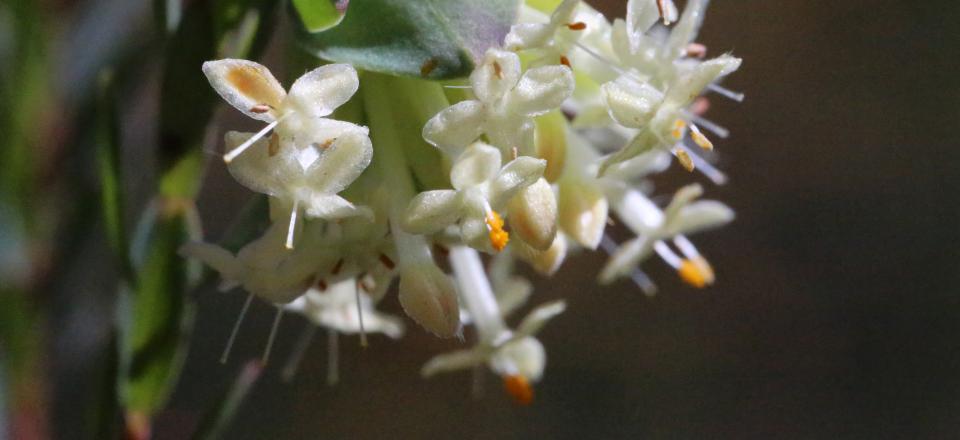Top 10 ways to give nature a helping hand

Top 10 ways to give nature a helping hand
Victorians are being urged to help nature adapt to new conditions under climate change through a new 10-point guide.
(Visit vicnature2050.org to read about the 10 points in full and to join the conversation with #vicnature2050 on social media platforms.)
It includes tips we can all follow to ensure the state's natural biodiversity - its animals, plants, micro-organisms and the ecosystems that support them all - remains protected into the future.
Nature is at its best in Victoria, which showcases everything from lush forests to plain lands and farms, urban parks and rocky shorelines to its beautiful alpine and mallee regions.
Victoria boasts more than 300 different ecosystems, supporting thousands of species of life, but these are at increasing risk because of climate change.
The 10 easy points provide guidance on how Victorians can not just protect nature as it is, but how they can help it adapt to the inevitable new climate.
"Climate change effects are becoming more and more apparent and we would have all already seen changes in our local environment," says Professor Ary Hoffmann, a climate adaptation expert from the University's Bio21 Institute.
“For instance, in the Victorian Alps we have found that grass cover has been decreasing over the last 30 years whereas shrub and forb cover has been increasing.”
"These 10 tips are about keeping people mindful of protecting our precious biodiversity, but at the same time accepting necessary change."
The 10-point list is a joint collaboration between the University of Melbourne, the Victorian National Parks Association and the Royal Society of Victoria.
In October 2015, the three partners staged the Managing Victoria's Biodiversity Under Climate Change symposium, which heard from a number of prominent scientists and was attended by more than 200 industry and government stakeholders.
The 10-point list (viewable at www.vicnature2050.org) was drafted bringing together the raft of research presented during the two-day symposium, along with feedback from the attendees.
The symposium was sponsored by Parks Victoria and the Victorian Department of Environment, Land, Water and Planning.
"This is based on some of the best knowledge in the country, provided through scientists and researchers to community groups, government agencies and NGOs," Prof Hoffmann said.
"We hope this list is the start of a long conversation with our fellow Victorians about keeping the state rich in biodiversity."
TEN THINGS WE CAN DO
1 - Listen, engage and work with others
Because every Victorian is a part of the discussion (and the environment), with thoughts and ideas to share about their local areas
2 - Accept that natural areas will change
As with the burnt forests of the Central Highlands, there can be acceptance and enjoyment of altered environments
3 - Protect reserves and look after nature on private land
Two-thirds of the state is owned privately, so turning our focus to our own backyards is just as important as funding for public spaces
4 - Remove threats (clearing, weeds and feral animals, etc)
Climate change or no climate change, we always need to be mindful of things like land clearing, livestock grazing and housing development
5 - Use natural processes like fires and floods to promote diversity
Floods and fire have negative connotations, but it must be remembered that they are often part of natural life cycles
6 - Connect landscapes and use "climate-ready" plants
We not only need to plant more to link isolated patches of flora but be careful about selecting plants that are more likely to survive in hotter and drier climates
7 - Welcome nature into our cities
As cities expand, so must our capacity to look after nature locally with good urban planning and support for city parks, reserves and waterways
8 - Record changes in our local area
The more we know how things change, the better we can adapt; and citizen science is one of the most resourceful ways of doing this
9 - Promote diversity in all that we do
All of our actions should aim to create distinctive, self-sustaining ecosystems and all of our actions should also be diverse
10 - Keep positive, informed and engaged
Giving Victoria's biodiversity a helping hand is a job for everyone, and positivity will lead to positive future
Prof Hoffmann said it was important to note that the 10 things underpin existing climate change strategies, but don't replace them.
"Some of these actions are new, but some are quite old and just common sense. It's just vital that we remember to give nature a helping hand," he said.
Victorians are encouraged to visit vicnature2050.org to read about the 10 points in full and to join the conversation with #vicnature2050 on social media platforms.
For interview:
Prof Ary Hoffmann | 0408 342 834 | ary [at] unimelb.edu.au
Ary works in climate change adaptation and pest/disease vector control. His group undertakes research on adaption of organisms to environmental stresses, including climate change and chemical pollutants.
Prof Mick McCarthy | 03 8344 6256 | mamcca [at] unimelb.edu.au
Mick works on environmental risk assessment as an academic within the University's School of BioSciences. He has studied a range of organisms, such as giant Gippsland earthworms to tiny sap-sucking insects, as well as mountain ash trees and mountain pygmy possums.
Prof Rod Keenan | 0428 330 886, 03 9035 8227 |rkeenan [at] unimelb.edu.au
Rod, a former director of the Victorian Centre for Climate Change Adaption Research, is an esteemed forestry expert with an extensive knowledge of forest and environmental policy. He has been involved in producing the UN's Global Forest Resources Assessment since 2003.

